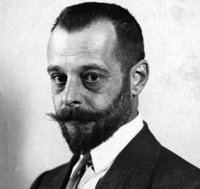










Felix d’ Herelle(1873—1949), French-Canadian microbiologist generally known as the discoverer of the bacteriophage, a virus that infects bacteria.
Research Career
After studying medicine in Paris and Leiden, Hérelle went to Guatemala City to direct the bacteriology laboratory of the municipal hospital and teach microbiology at the local medical school. In 1909 he was sent by the Mexican government to study microbiology at the Pasteur Institute in Paris. While there, he experimented with a bacterium known to cause enteritis (digestive tract inflammation) in certain insects. In the course of his work Hérelle occasionally noticed clear spots (areas free of bacteria) on gelatin cultures of the bacterium under study. Subsequently he investigated a form of dysentery afflicting a French cavalry squadron during World War I, and he happened to mix a filtrate of the clear areas with a culture of dysentery bacteria. The bacteria were quickly and totally destroyed by an unknown agent in the filtrate that Hérelle termed an “invisible microbe”; he later renamed it a bacteriophage.
In subsequent years Hérelle attempted to use bacteriophages as therapeutic agents in the treatment of bacterial infections. As a result of his work in Indonesia, studying human dysentery and an infectious disease of buffalo, he perfected a technique for isolating bacteriophages and published Le bacteriophage, son role dans l’immunite (1921; “The Bacteriophage, Its Role in Immunity”). Although he achieved some success in using bacteriophages in the treatment of dysentery and other infections, the medical use of these agents against such diseases was later replaced by antibiotic and other drug therapy.
Herelle organized the first courses in protobiology (as study of the bacteriophage was then called) at Yale University, and, at the request of the Soviet government, he established several research institutes in the Soviet Union. From 1938 until his death he continued his study and experimentation in Paris.